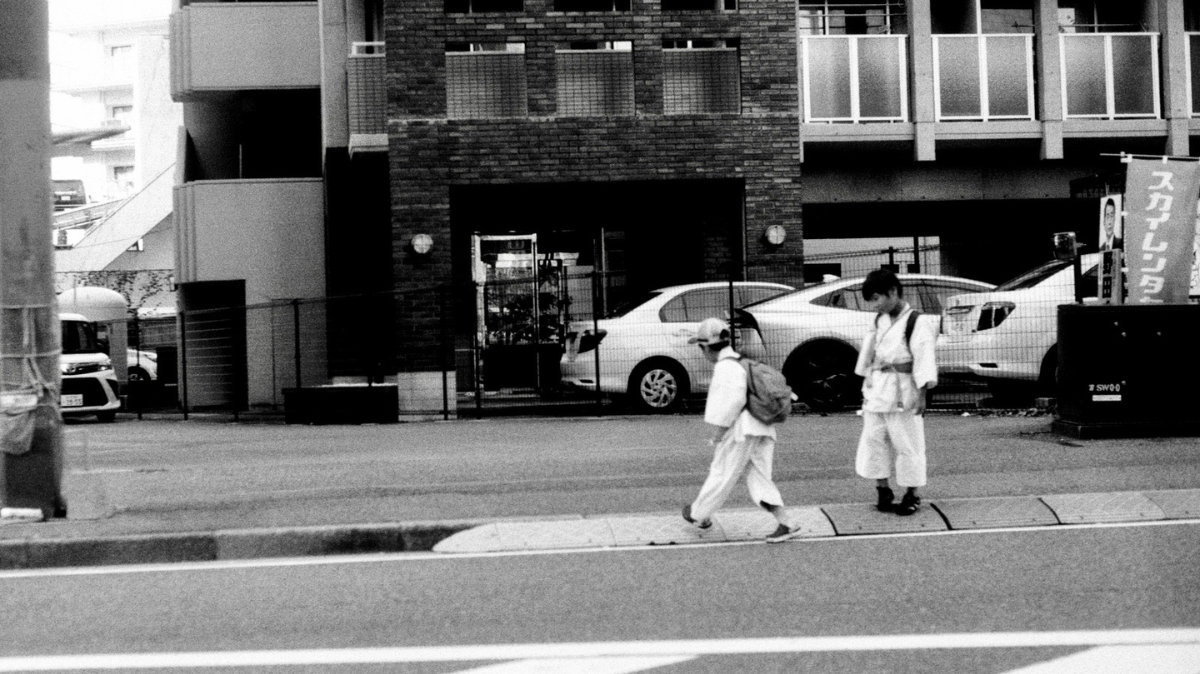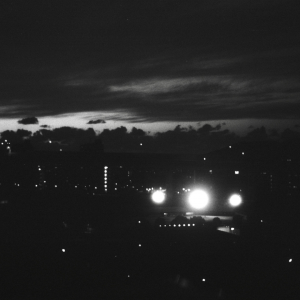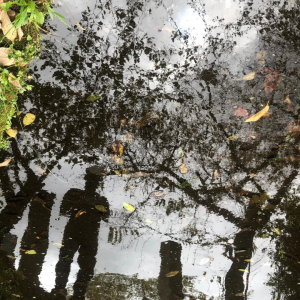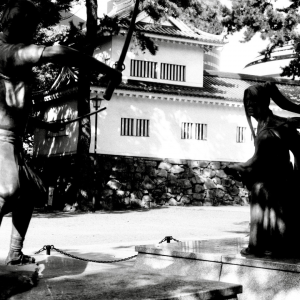NOWHERE-NOW HERE, HECTOR CASTELLS TRAVEL JOURNAL – CAPSULE II
The Way of Harmony
“In Martial Arts, speed is not the true Way. As far as speed is concerned, the question of fast or slow in anything derives from failure to harmonisee with the rhythm.” —Miyamoto Mushashi, The Book of Five Rings.
Japan is not an island but over 13K of them, a perfectly tuned G-minor anomaly in Life’s off key soundtrack.
After the downfall of Greek mythology, Harmony became a Western orphan helplessly searching for Hera and Zeus, aka mum and daddy. Harmony was lonely and sad, had no shoes or roof, and rarely ate or slept. She was raped by Roman soldiers and sold as a slave before she managed to escape —still as a teenager. She grew up and became a tenacious, unstoppable walker.
Running seldom dignifies anyone, and Harmony was no exception: she looked like a long distance zombie-runner on methamphetamine.
The search of the almighty parents was a lost cause —and Harmony knew it. So she turned the mislaid hunting into restless walking, a variation of her contemplative life rhythm that resulted in a ravenous hunger for new landscapes, a life movement towards the elation of knowing that every new step would leave Hell one step further behind.
Harmony envisioned hope in the moving skies and fading hills, in sudden plains, lavish ravines, exotic flowers and buzzing insects, until the ever-changing sunsets came to an organic halt in the southern island of Kyusha —4th largest in the over 13K islands ranking.
Harmony believed that there was no other way of living than becoming the Way, but unlike her future disciples, she took a while to realise that the Way lives in stillness.
It was a crispy sunny morning when something finally settled in —and the runaway came to an end. Harmony had walked restlessly for years, until gently landing on top of an unfathomable crater, Mount Ado, in Japan. She built a tiny hut that Basho, the Haiku pioneer, would replicate many decades after in the outskirts of Kyoto, and lived quietly motionless ever after.
The NZM has driven the 1969 Volkswagen for hours. We have crossed the hottest midland in the country, the heart of Aso’s province, and our backs have melted with the leather seats.
“How the fuck did Harmony walk this ring of fire?”
“Please, don’t say that word and Harmony in the same line.”
I bow and fustigate myself.
Before reaching the crater, we stop by Harmony’s sacred fountain, the source of the purest water you can drink. According to the NZM, the liquid travels over one hundred years before reaching the wet ground where we are cancelling dehydration. There is a quiet stream and a harmonious manmade spring with eight taps: circa 800 years of water simultaneously travelling until reaching our cracked lips. It is almost overwhelming in a lowly Stendhal’s syndrome kind of way.
Every constant traveller knows when to stop moving. Harmony did upon reaching this land many centuries ago. The Way is like the body, a much more powerful source of wisdom than the brain.
The spring is located in Hata, north of Fukuoka, and its water bubbles up from the roots of an 800-year-old camphor tree. Its massive branches provide a stripped, tiger-like kind of shade over the temple erected right behind it. You can climb the tree and observe the see through, crystal kingdoms of Kyusha’s cut against the temple’s façade. This quiet island is always at arm’s length from thick and lush maple, pine and sequoia forests, and hiking them is like elucidating the nuanced, exuberant foundations of In Praise of Shadows, the mind-blowing essay on the darkest colour.
If light is scarce then light is scarce; we will immerse ourselves in the darkness and there discover its own particular beauty
(Tanizaki Junichiro, In Praise of Shadows)
The NZM points east with a long index. I follow and see the massive crater.
“Harmony’s home. She decided to live in the nostrils of the dragon. She was happy to die every day. The volcano is still active, although it has remained quiet since her time.”
The thrill of an immediate eruption takes our breath away. Since Nippon people can calculate and foresee the unforeseen, I ask when they expect the crater to flare up again…
“It will happen at some point in the next sixty years.”
We walk the length of a town that could be wiped off of the crust of the Earth as we speak. We talk to a lovely butcher, a singing, drought fisherman, and to several of the traders at the organic fruit and vegetable market.
“We know, of course we do, all of us, from South to North: this red apple could turn into a pile of ash by breakfast. We were given a doomed land. But tell me, which land is not? Our only mission is to respect it and protect it knowing that we are nothing but its ants,” says the apple seller —5 dollars apiece.
Harmony knew better than me.
She met her big sleep right here.
She must be Now Here, somewhere in the middle of nowhere.





